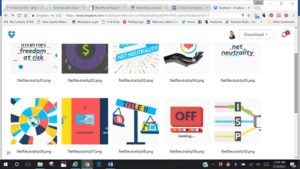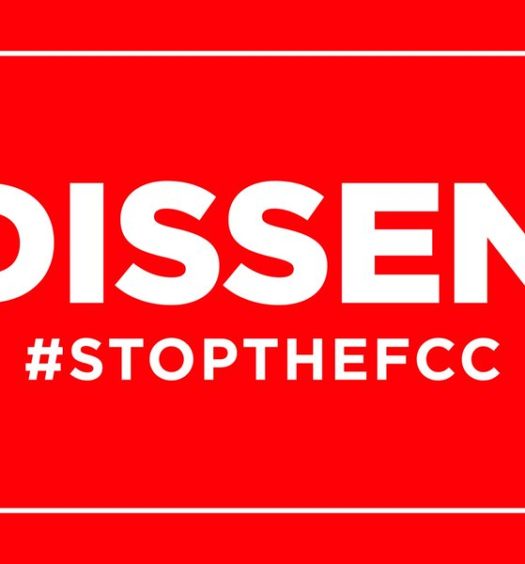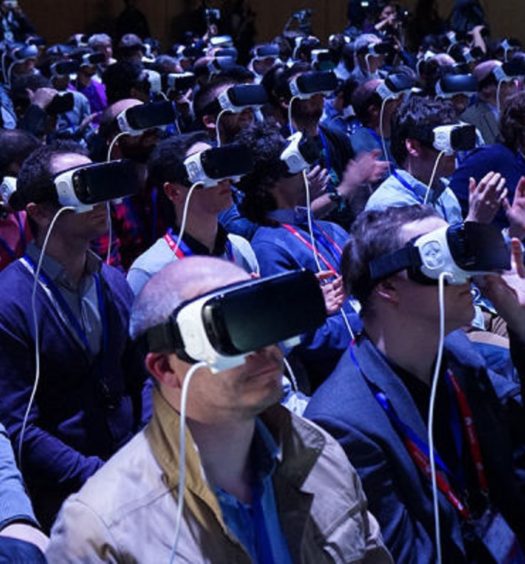 Net Neutrality: Staying the Course. The dramatic rise of Internet video — occupying an increasingly dominant share of our aggregate bandwidth — fueled a raging debate over the rules of the broadband road. Net Neutrality, the basic notion that consumers should have equal and unimpeded access to any and all Internet services, quickly became a politically-charged buzzword. While just about everyone favors an open Internet, the practical meaning of such advocacy is much more than meets the eye.
Net Neutrality: Staying the Course. The dramatic rise of Internet video — occupying an increasingly dominant share of our aggregate bandwidth — fueled a raging debate over the rules of the broadband road. Net Neutrality, the basic notion that consumers should have equal and unimpeded access to any and all Internet services, quickly became a politically-charged buzzword. While just about everyone favors an open Internet, the practical meaning of such advocacy is much more than meets the eye.
Even as the traditional pay TV business remains strong, Internet TV services are proliferating. On the heels of Netflix, Amazon and Hulu, a host of new standalone services and packages has launched during the last few years (e.g., DirecTV Now, HBO Now, Showtime, YouTube TV, CBS All Access, Sony’s PlayStation Vue, Dish’s Sling TV). And Ultra HD, the new 4K video format providing four times the resolution of today’s HDTV pictures, is slowly gaining traction, underscoring the need for another generational boost in available bandwidth.
Our primary goals going forward should be:
• Sustaining an open Internet for all;
• Encouraging more competition and innovation; and
• Creating an environment conducive to massive new infrastructure investment, especially with respect to dramatic bandwidth expansion and maximal reach.
THE BACK STORY – RECENT HISTORY
Soon after Donald Trump’s January 2017 inauguration, he promoted Ajit Pai to the role of FCC chairman. Pai, a Republican appointed to the FCC by Obama in 2012, wasted no time in rolling back consumer-related Internet regulations implemented by his predecessor, Tom Wheeler. Next in line is his juiciest target: the FCC’s net neutrality rules implemented in 2015 after several years of debate.
Will Net Neutrality rules remain?
The Below Chronology Illustrates How We Arrived at This Juncture:
• 2002: The FCC classified broadband cable modem access as a lightly regulated “information service,” citing national priorities of capital investment and innovation.
• 2005: The Supreme Court affirmed the FCC information services classification in a 6–3 decision (the “Brand X” case), and DSL-based Internet access was also included.
• 2010: The FCC issued its Open Internet Order governing traffic policies of broadband Internet Service Providers (ISPs). These net neutrality rules dictated “no blocking” of legal content; “no unreasonable discrimination”; and “transparency” with respect to ISP business policies and network management.
• 2014: In Verizon v. FCC, the U.S. Court of Appeals for the D.C. Circuit voided the FCC’s 2010 net neutrality rules, finding the “no blocking” and “no unreasonable discrimination” rules beyond the agency’s authority.
• February 2015: The FCC voted 3–2 to reclassify ISPs as providers of “telecommunications services” and thereby regulate them as common carriers under Title II of the Communications Act of 1934. Two weeks later, the FCC issued specific rules in a new Open Internet Order. The primary mandates included: “no blocking” and “no throttling” of legal content (in both cases, subject to “reasonable network management”), and “no paid prioritization” (i.e., ISPs can’t accept money in exchange for establishing “express lanes”).
• December 2015: The FCC initiated an investigation regarding whether “zero-rating” services violate the Open Internet Order. Zero-rating typically involves a streaming video or music service that doesn’t count toward the service provider’s monthly data caps. The specific services being examined were T-Mobile’s Binge On, AT&T’s DirecTV Now, Verizon’s go90, and Comcast’s Stream TV.
• June 2016: The U.S. Court of Appeals for the D.C. Circuit upheld the FCC’s 2015 Open Internet Order (net neutrality rules) in response to a challenge by cable, telecom, and wireless service providers.
• February 2017: Trump’s new FCC chairman, Ajit Pai, shut down the investigation into whether zero-rating services, such as AT&T’s DirecTV Now, violate the net neutrality rules.
• May 2017: The FCC voted to propose a broad review of the 2015 Open Internet Order, initiating an attempt to reverse the Title II “telecommunications services” classification and to repeal the net neutrality rules. There will be a three-month comment period as part of the Notice of Proposed Rulemaking (NPRM).
• July 12, 2017: Supporters of the net neutrality rules will stage a “Day of Action” rally in support of the open Internet, and against the FCC’s attempts to reverse the Open Internet Order.
My Take-A-Ways on the Current State of Net-Neutrality Affairs
Back in 2015, I was not a big fan of the FCC invoking the Title II regulatory framework on the broadband Internet. More preventative than punitive, it felt like a solution chasing a problem. But now that these Net Neutrality rules are in place, it seems wise to pause and reflect on the current situation, and whether the rules are truly in the consumer’s best interest.
While millions of comments will be submitted to the FCC, I believe a few strong market trends weigh in favor of staying the course.
First, media/telecom consolidation is back in vogue. In July 2015, AT&T completed its $50 billion acquisition of DirecTV, thereby becoming the nation’s largest video service provider as measured by pay TV subscribers. AT&T is also hoping to complete its $85 billion acquisition of Time Warner (owner of HBO, CNN, and Warner Brothers) later this year. In May 2016, Charter, backed by media titan John Malone, separately acquired Time Warner Cable and Bright House Networks for a total of $67 billion, becoming the third largest pay TV provider (after AT&T and Comcast). Altice, a European telecom company, acquired Cablevision and Suddenlink for a combined total of $27 billion, instantly making it a major player in the U.S. market. On the wireless front, Comcast and Charter are in discussions with Sprint regarding a long-term strategic deal, while Sprint and T-Mobile have been negotiating a potential merger.
Second, competition remains weak amongst broadband ISPs. Most U.S. homes have a choice of only one or two high-speed Internet providers. It seems unlikely that we will see much additional competition until wireless services providers (e.g., Verizon) start rolling out 5G in the 2020’s.
Third, in February 2017, FCC chairman Pai green-lighted the zero-rating services of ISPs (such as AT&T’s DirecTV Now) by shutting down his predecessor’s investigation into these services. As a result, these favored services will continue to gain momentum, potentially at the expense of unaffiliated competitors.
Fourth, there is scant evidence that the doomsday scenario of stymied innovation and attenuated capital spending, prognosticated by the Open Internet Order’s critics, is materializing. In contrast, given the high stakes involved, increased capital investment and more innovation are occurring. For example, cable operators are rolling out DOCSIS 3.1, the industry’s next-generation, blazing-speed cable modem technology.
 With industry consolidation increasing, limited competition amongst broadband ISPs, zero-rating services politically legitimized, and a strong investment climate, all signs point to staying the course with net neutrality. Let’s see how new services and competitors fare in this market environment. It would be a shame for the FCC to give up its strongest regulatory tool in the event that stronger competition does not emerge, enabling the powerful incumbents to further milk their dominant positions. Whatever happens, there will likely be more legal challenges. Perhaps the Supreme Court will be the ultimate arbiter.
With industry consolidation increasing, limited competition amongst broadband ISPs, zero-rating services politically legitimized, and a strong investment climate, all signs point to staying the course with net neutrality. Let’s see how new services and competitors fare in this market environment. It would be a shame for the FCC to give up its strongest regulatory tool in the event that stronger competition does not emerge, enabling the powerful incumbents to further milk their dominant positions. Whatever happens, there will likely be more legal challenges. Perhaps the Supreme Court will be the ultimate arbiter.
Who knew that the Internet would be so complicated? — Marc Tayer.




September 15, 2017
[…] jury is still out. The Net-neutrality debate looms large as does the ever-changing streaming services options. The hearing on net […]
November 22, 2017
[…] previously reported in Socially Sparked News in May 2017, FCC chairman Ajit Pai proposed a broad review of the 2015 Open Internet Order, […]
December 14, 2017
[…] our July 14th feature by contributing technology writer Marc Tayer, Net Neutrality Staying The Course, Marc outlines the net neutrality issue and offers a clear argument for maintaining the status quo. […]
December 30, 2019
[…] to Socially Sparked News contributing writer, digital/technology veteran Marc Tayer, the Net Neutrality rules were working well as a watchdog in favor of an open Internet, without stifling investment or […]